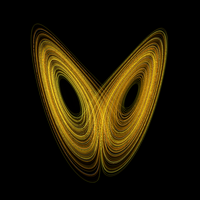The Object Theory
The example of the imagining a centaur is famous in the history of philosophy. The object theory, and the difficulities surrounding it, derive from philosophical reflection on this and similar examples of the use of our imagination.
Certainly, in one sense, there exists an object in our imagination; the object must be "real" or we would not be able to imagine it. There is a picture of something in my mind.
On the other hand, the centaur is known to be a mythical being and hence has no existence. Is my thought, then, actually directed toward a non-existing object? How can this be if an intentional act requires an object? Surely, the object toward which my thought is directed exists, otherwise, if the object theory is correct, there would be no thought at all....
The Content Theory
The content theory seeks to resolve some of the difficulties of the object theory. It utilizes the idea that there must be an intermediary between consciousness and its ultimate object. For a first approximation, this intermediary can be variously called a "sign," a "representation," a "vehicle" or, more generically, a "content" in the intentional act. Thus, the act of thinking of imagining an actually existing thing (say, a table) is easily described and explained: my image of the table is the vehicle, while the object of my intention is the table itself. To solve the problem of non-existing beings that can be the objects of thought, the content theory allows that content can exist or "be" without the corresponding object. In imagining a centaur, I have a mental image whose content is a centaur. The centaur "exists" as content in my mind, but there is no object outside of the mind corresponding to this thought.
Difficulties for the Theory of Intentionality, Anthony Birch
...nothingness ≥ or ≤ ideas?
Subscribe to:
Post Comments (Atom)

No comments:
Post a Comment